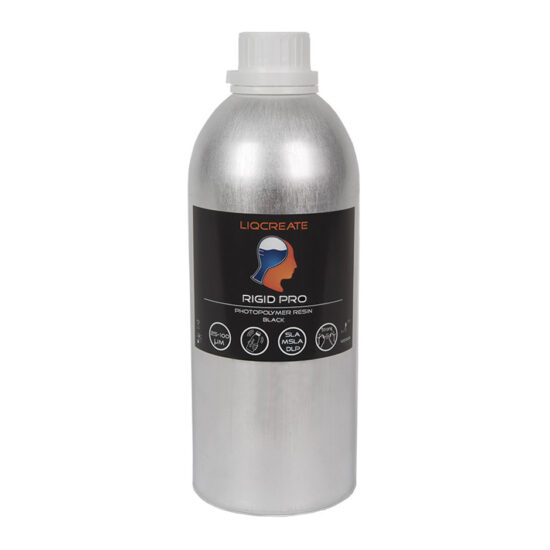Liqcreate Rigid Pro is a rigid black photopolymer resin and can be processed on most open DLP, MSLA and laser based 3D-printers operating at a wavelength of 385-405nm. 3D-printed parts from this material exhibit high strength and rigidity. Liqcreate Rigid Pro only requires UV post-curing with heat to reach its optimal strength. This material has excellent features like: high stiffness, durability, high strength and good temperature resistance which makes it ideal for molding, and industrial applications like pulleys, automotive connectors, covers, brackets, housings and demanding engineering parts. In this article you can find tips and tricks to work with Liqcreate Rigid Pro 3D-printing resin. If you have any questions, reach out to us at info@liqcreate.com and our technical team will assist.
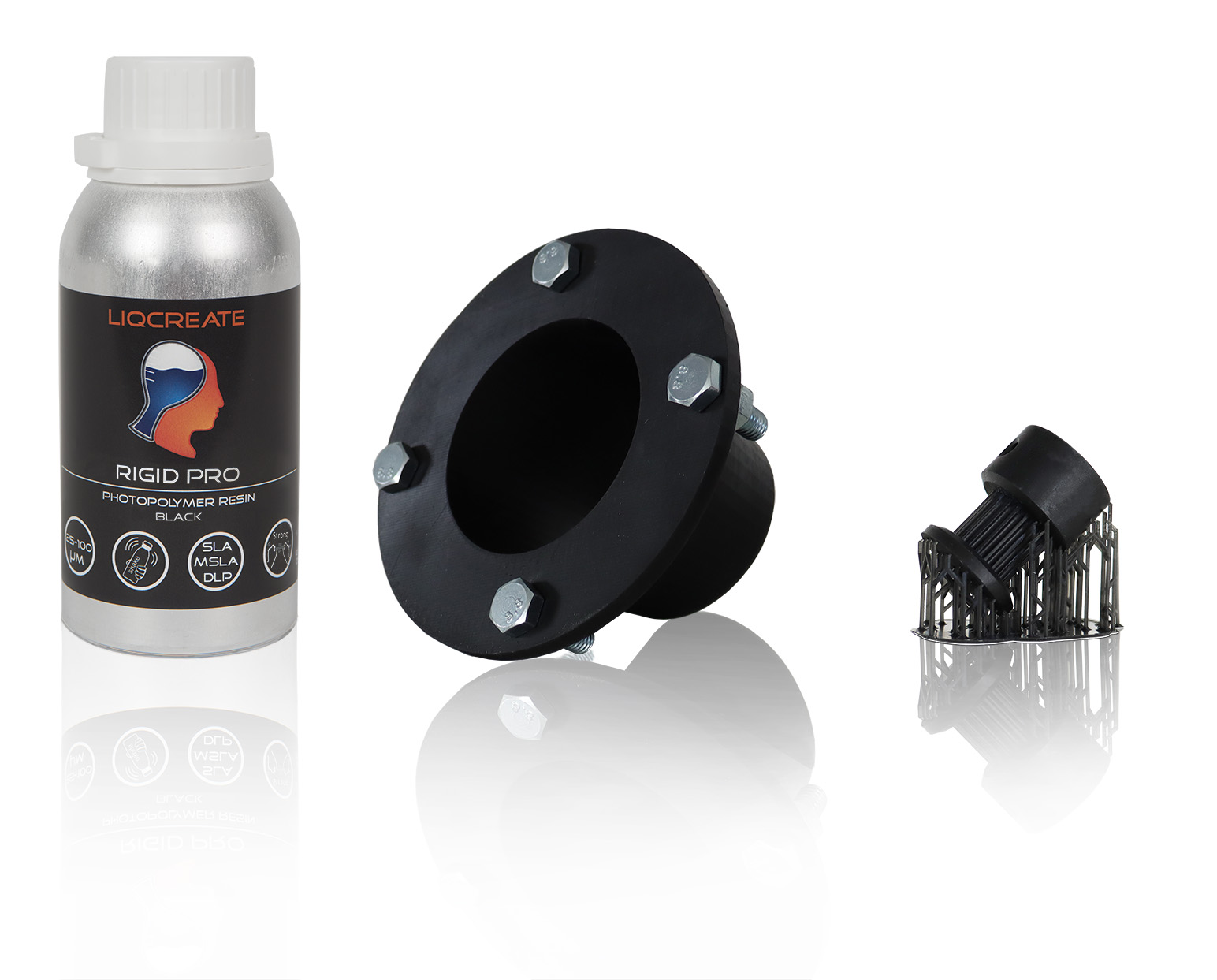
The following topics are covered in this article:
- Shake before use.
- 3D-printing parameters.
- Support settings.
- Cleaning, washing and post-curing your part.
- How to clean/filter the resin?
- Patterns in resin during/after printing.
- Minimum wall thickness.
- Part orientation and over-hang.
- Part surface finish or sticky surface.
- Shrinkage compensation.
- Ideal resin printing temperature.
- Solving print failures.
- Storage conditions.
- Additional information.
Support
Do you need any help with 3D printing our SLA, DLP or LCD resins? We can help you! Just look for the question you have below. If you can’t find it, let us know by contacting us!
Technical →
1) Shake before use.
For most resin, shaking for a couple minutes is advised, especially after long storage to get a homogeneous mixture before printing. Same goes for Liqcreate Rigid Pro. Shake for a couple minutes and let the resin rest for a couple minutes before using. During shaking the resin is homogenized, but some air bubbles will be present. If you start a print job right after shaking, air bubbles might be present in the first layers of the part.
2) 3D-printing parameters.
Liqcreate Rigid Pro 3D-printing resin is designed for open compatibility on 405nm and 385nm DLP, MSLA, LCD and laser-based resin 3D-printers. It is important that the 3D-printer is open for 3rd party resins and parameters can be changed. A lot of parameters are already prepared and listed on our website. Click on your actual printer to see if Liqcreate Rigid Pro parameters are available. If that is not the case, send an e-mail to our technical team at info@liqcreate.com and they will try to help.
3) Support settings.
Support settings are depending on the type of resin in combination with the type of printer, release mechanism, material on the bottom of the resin tank and also the secondary settings like print speed. With the extreme growth of available resin 3D-printers in the past years, it is impossible to give validated support settings for each printer. In this section you can find settings for some generic printers, design and print speed. We tested a standard design with different settings. If your part is more bulky / large cross-section for each layer, then the support tip thickness or intersection might need to be increased.
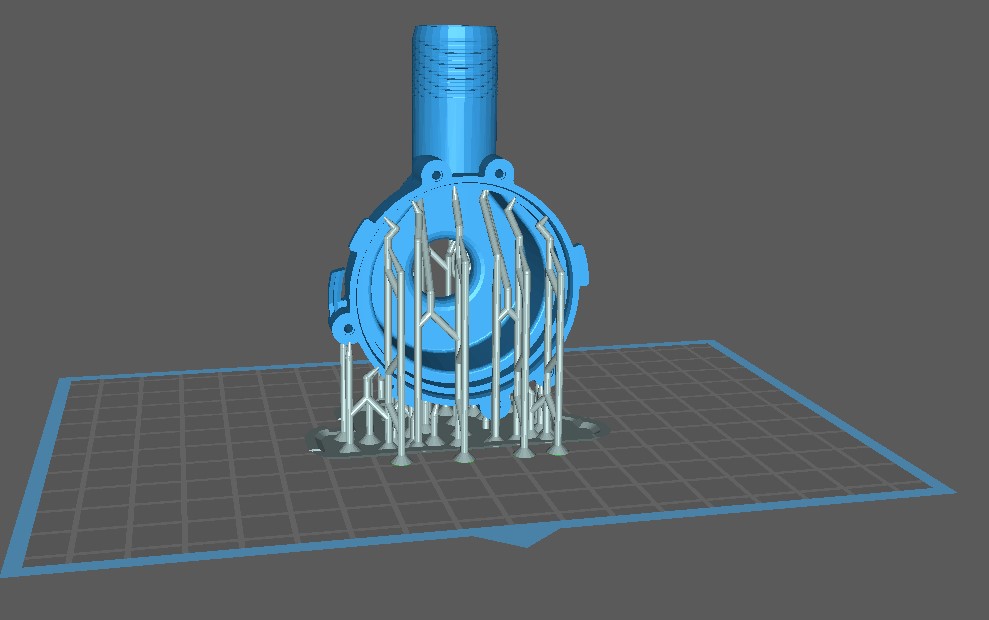
Image: Test parts to optimize support settings.
Support settings on the Uniformation GKTwo were successfully validated for this part and can be found below. In chapter 6 we explain how to orient and to minimize large bottom surfaces. We tested a standard design with different settings. If your part is more bulky / large cross-section for each layer, then the support tip thickness or intersection might need to be increased.
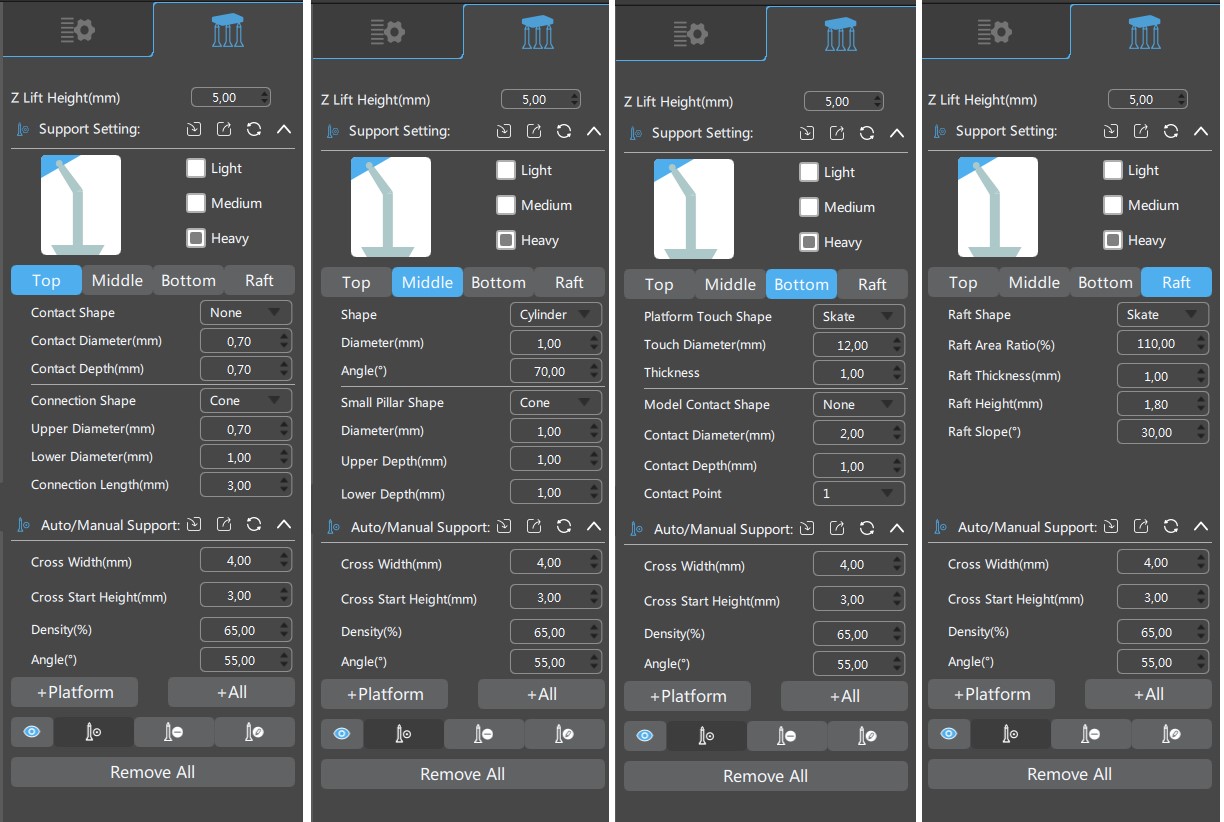
Image: support settings of Rigid Pro with our generic test parts, tested on the Uniformation GKTwo resin 3D-printer.
4) Cleaning, washing and post-curing your part.
Washing is similar to other Liqcreate resins. wash in either IPA, Ethanol or Liqcreate resin cleaner. For resin cleaner the cleaning instructions on that webpage can be used. For IPA and Ethanol they can be used in an ultrasonic cleaner or cleaner with agitation (like the new low cost Anycubic / Elegoo washing unit). Preferably 2 times 2 minutes washing cycle. For the best result the second wash should be performed in fresh IPA / ethanol. If there are small cavities that are not cleaned by this method, then use a soft brush to clean them out and wash in fresh solvent again for 1 minute. Then let the part dry for 30 minutes. Before post-curing, inspect that the part is dry and completely free from solvent (no shiny resin spots on the surface). Otherwise wash again in fresh solvent for 1 minute. Do not wash for longer than necessary as parts can deform when exposed to IPA / Ethanol for >30 minutes when not fully cured. Also be careful if your parts are thin (<2mm) and the IPA in the ultrasonic cleaner is warm (>30°C / 86°F), parts can warp. If you notice this, either make the parts thicker or wait until the temperature of the IPA is below 30°C / 86°F.
When small holes and tight corners are difficult to clean, then brushing with a soft brush is advised to clean these specific areas. After brushing, rinse in fresh IPA / ethanol to get all resin leftovers cleaned.
For Rigid Pro, two different curing methods are advised. In a heated curing unit, cure for 30 minutes at 60°C / 140°F to achieve optimal properties for non high –temp applications. For applications that require a bit more temperature resistance, increase the curing cycle to 120 minutes at 60°C/140°F. Extended post-curing information and settings for different curing units can be found in this link. Curing units like the Formlabs Cure work well. don’t UV-cure to far above 60°C / 140°F as the uncured part is not resistant to high temperatures.
5) How to clean / filter the resin?
When a part failed during printing, it is always advised to clean your resin tank. This is usually done by filtering the resin to make sure all rigid plastic pieces are gone. If cured resin parts are present when you start a new print, they can damage your FEP film of even your LCD screen. A standard resin filter will work sufficiently to filter Rigid Pro resin.
6) Patterns in resin during / after printing.
Liqcreate Rigid Pro resin is stabilized. However, after a long print job or in very warm areas, there can be some de-mixing of the pigments in the resin. This effect is stronger over a longer period of time or when the temperature is higher. In some LCD based printers, the printer itself generates a lot of temperature during printing, accelerating this effect. For printing an ideal temperature of 20-25°C / 68-77°F is recommended.
As the resin is stabilized this should not have an effect on your printed part. It is advised to mix the resin with a plastic spatula before running a new print. Alternatively, try to keep the resin at or below 25°C / 77°F if possible. External heating above 20°C / 68°F is not required and can lead to unwanted acceleration of de-mixing.
7) Minimum wall thickness.
The advised average minimal wall thickness for Liqcreate Rigid Pro is 2mm. it is possible to print finer details in local areas. Also larger thin walls can be printed but will require extra support structures for successful printing.
8) Part orientation and over-hang.
It is not advised to print large and relatively flat parts on supports. if possible, always print at an angle to prevent large bottom surfaces as the quality when printing in an angle is much better. In this test we printed a part from Thingiverse and also made a modification on it to see at which angle the parts can be printed. The thingiverse file was rather solid, while our own modification had a wall thickness of 2.0 mm.
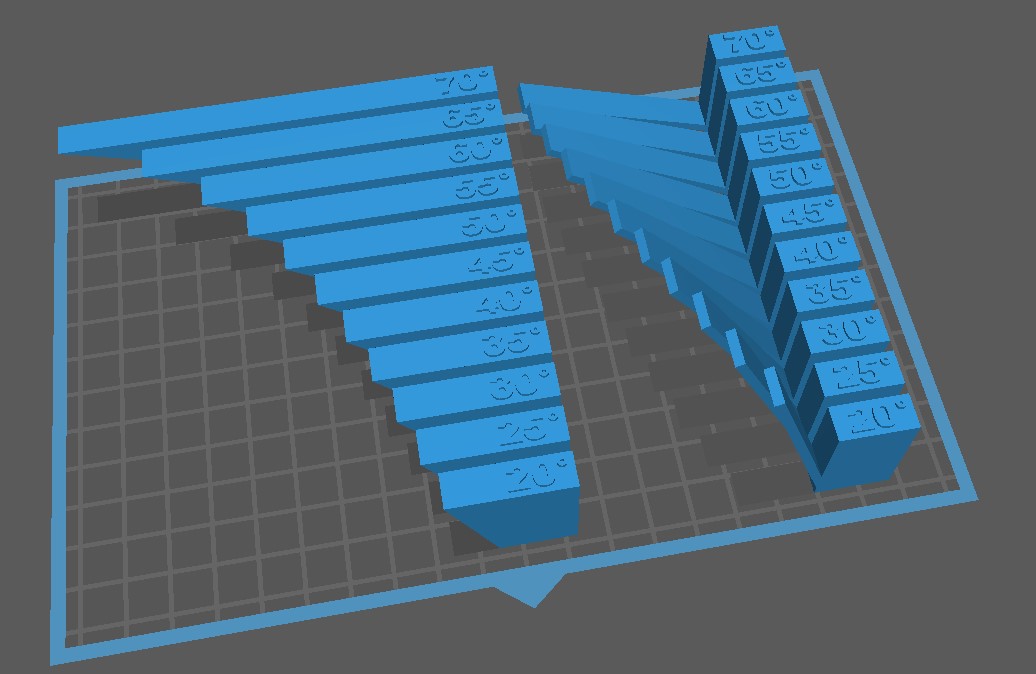
Image: Testing printing angle with the Thingiverse (Thing 40382) file and a small modification of it with thinner walls (2.0 mm).
 Image: test to print at different angle without supports with Liqcreate Rigid Pro resin.
Image: test to print at different angle without supports with Liqcreate Rigid Pro resin.
It is possible to print 2mm thick walls in Rigid Pro at an angle of 70 degree. However, the bottom surface will be better when supporting parts with an angle above 45 degree.
9) Part surface finish or sticky surface.
Printed parts from Liqcreate Rigid Pro are opaque and shiny during printing. A semi-matte surface will appear after washing and drying as in the picture below. Parts can be polished or coated to get a glossy surface finish.

10) Shrinkage compensation.
Tested on the Uniformation GKTwo, the shrinkage compensation in Chitubox to get better accuracy can be found in the picture below. If you need super accurate parts, it is worth to read this article. As that article explains that the accuracy for thick and thin parts may deviate.
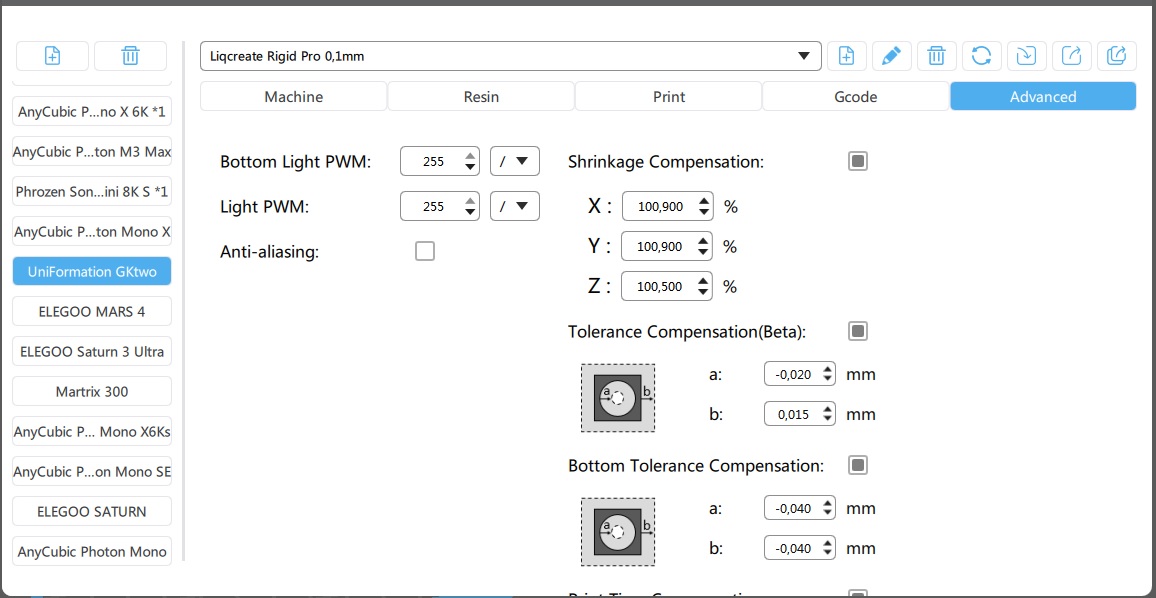
Image: Shrinkage / tolerance compensation for Rigid Pro in Chitubox tested on the Uniformation GKTwo.
This kind of accuracy was achieved over a thickness are of 1,00 to 24,00 mm on an quality entry level MSLA printer like the Uniformation GKTwo:
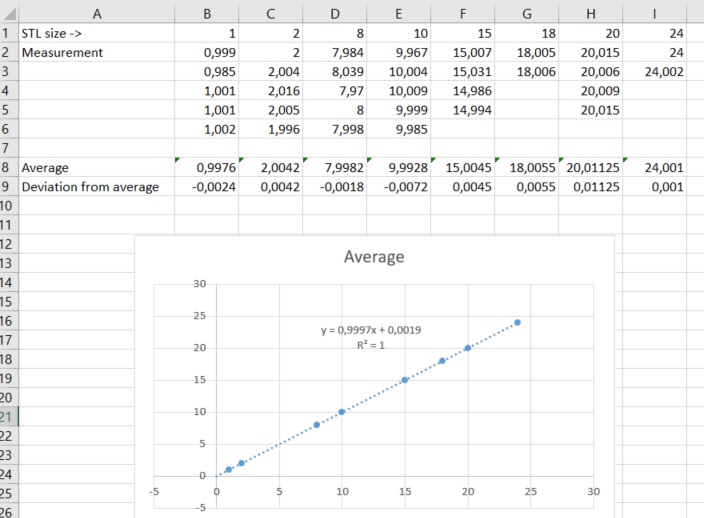
11) Ideal resin printing temperature.
It is advised to print with Liqcreate Rigid Pro resin at at 20°C / 68°F and maximum at 25°C / 77°F. printing at lower temperature causes random failure in the material. Excessive heating can lead to faster de-mixing of the resin and is not advised.
12) Solving print failures with Liqcreate Rigid Pro resin.
There are a lot of common resin 3D-printing issues. In this article you can find 10 common resin 3D-printing fails and how to solve them. If you have need support, send is an e-mail at info@liqcreate.com and our technical team will try to assist.
13) Storage conditions.
Store the product in its original bottle, plug and cap at minimal 5°C / 41°F and maximum 30°C / 86°F. Avoid sources of heat, radiation, static electricity, sunlight and contact with food.
14) Additional information.
Thermal aging of Rigid Pro resin
Chemical compatibility of Rigid Pro resin
If you have any questions when working with Liqcreate Rigid Pro or any other Liqcreate resin, send us an e-mail at info@liqcreate.com.
About Liqcreate Rigid Pro
Liqcreate Rigid Pro is a rigid black photopolymer resin and can be processed on most open DLP, MSLA and laser based 3D-printers operating at a wavelength of 385-405nm. 3D-printed parts from this material exhibit high strength and rigidity. Liqcreate Rigid Pro only requires UV post-curing with heat to reach its optimal strength. This material has excellent features like: high stiffness, durability, high strength and good temperature resistance which makes it ideal for molding, and industrial applications like pulleys, automotive connectors, covers, brackets, housings and demanding engineering parts.
Key benefits |
3D-Printer compatibility |
| · High strength | · Asiga & Nexa3D series |
| · Dimensional stability | · Elegoo & Anycubic series |
| · Good chemical stability | · Phrozen & Creality series |
| · Good temperature resistance | · And many more |
